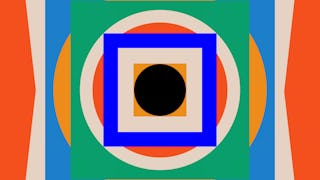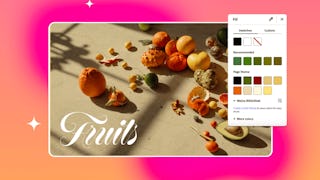This introductory course sets the baseline for understanding visual communication by introducing the concepts, vocabulary, and jobs skills relating to visual communication. We will start by covering the history of design and theories and then move on to the elements and principles of design, allowing you to develop the skills necessary to practice your understanding of the design process. We will also examine creative solutions to design problems—all of which will help you succeed in using visual communication skills in the other classes in this specialization and in your career after completing all the course. By the end of this course, you’ll have a better understanding of and be able to answer the question: What is visual communication?


您将学到什么
Evaluate theories of visual communication that can be used to explain how visuals communicate to convey messages.
Define and use design elements and design principles, and understand their significance in designing effective communication strategies.
Develop an understanding of the language and careers in visual communication.
您将获得的技能
要了解的详细信息

添加到您的领英档案
August 2025
5 项作业
了解顶级公司的员工如何掌握热门技能

该课程共有4个模块
In this module, we will answer the question: What is visual communication? Be it graphic designers, copywriters, project managers or creative directors, people in the various sectors of visual communication create artifacts that interpret, inform, instruct, persuade, or entertain people in their surroundings and life in general. This creative work addresses audience, content, and context, while meeting functional communication needs. Visual communicators are concerned with the physical, cultural, societal, and technological aspects of creating visual work, whether that work is print-based design, interactive media, or environments.
涵盖的内容
5个视频1篇阅读材料2个作业
In this module, we will analyze and evaluate visual communication using multiple perspectives and theories that are used to develop appropriate communication choices for information gathering and sorting. We will start by investigating the science behind visual communication and how the brain sorts information to try and make sense of the world. Then we will move on to cognitive perception and finally put all of this information together to understand how individuals interpret information to make meaning within the broader society.
涵盖的内容
4个视频1篇阅读材料1个作业
Now that we have covered the history of visual communication as well as the science behind and theories of visual communication, we’ll use this module to articulate the fundamental elements and principles of formalist design that enable a visual message to meaningfully engage an audience. We will also be analyzing visual strategies in different media from different perspectives to better understand and see how visual cues and elements can impact meanings and messages.
涵盖的内容
3个视频1篇阅读材料1个作业
In this module we will cover various design steps and processes. Good visual communication takes the time to explore, to take risks and to reiterate often. Don’t allow your first attempt at any solution to be your only attempt. Throughout this specialization you will be exposed to ideas, applications, experiences and opportunities you might otherwise overlook. Hopefully in the first three modules of this first course, you are coming to understand that visual communication requires familiarization and literacy with design that goes way beyond your typical design applications, word processing or presentation tools. Knowing these computer programs does not make you a visual communicator. Design is not a one-stop shop or a simple method to learn—and hopefully you will continue to learn about visual communication beyond these courses. That’s the point. While the courses in this speculation are primarily about creating visual artifacts that communicate effectively, that doesn’t mean you need to be an artist to succeed. Learning what doesn’t work is an essential process in understanding what does work. The more time you spend with the exercises in this course, the more skills you’ll develop as a visual communicator.
涵盖的内容
3个视频1篇阅读材料1个作业1次同伴评审
位教师

从 Music and Art 浏览更多内容
 状态:免费试用
状态:免费试用University of California San Diego
 状态:免费试用
状态:免费试用California Institute of the Arts
人们为什么选择 Coursera 来帮助自己实现职业发展




常见问题
To access the course materials, assignments and to earn a Certificate, you will need to purchase the Certificate experience when you enroll in a course. You can try a Free Trial instead, or apply for Financial Aid. The course may offer 'Full Course, No Certificate' instead. This option lets you see all course materials, submit required assessments, and get a final grade. This also means that you will not be able to purchase a Certificate experience.
When you purchase a Certificate you get access to all course materials, including graded assignments. Upon completing the course, your electronic Certificate will be added to your Accomplishments page - from there, you can print your Certificate or add it to your LinkedIn profile.
Yes. In select learning programs, you can apply for financial aid or a scholarship if you can’t afford the enrollment fee. If fin aid or scholarship is available for your learning program selection, you’ll find a link to apply on the description page.
更多问题
提供助学金,





